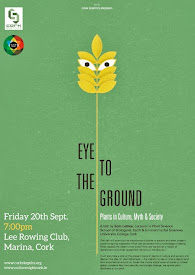Plant Watch: Common Poppy - a cultural icon
The Common Poppy (Papaver rheoas) can now be found throughout the country on land which has been recently disturbed due to cultivation or building.
This relatively abundant agricultural weed forms seed which can live for a long time in the soil, before germinating when soil disturbance leads to them being exposed to the right light and moisture conditions for them to grow.
A classic example of such seed dormancy was demonstrated on the Somme battlefield when wild flowers recolonised the land disturbed by battle during World War 1. Since then, the poppy has become a cultural icon in the UK and was adopted by the British Legion as a symbol commemorating the dead of that war.
In Flanders Fields by John McCrae, written in 1915, makes prominent use of the poppy.
In Flanders fields the poppies blow
Between the crosses, row on row,
That mark our place; and in the sky
The larks, still bravely singing, fly
Scarce heard amid the guns below.
We are the Dead. Short days ago
We lived, felt dawn, saw sunset glow,
Loved, and were loved, and now we lie
In Flanders Fields.
Take up our quarrel with the foe:
To you from failing hands we throw
The torch; be yours to hold it high.
If ye break faith with us who die
We shall not sleep, though poppies grow
In Flanders Fields.
John McCrae
P. rhoeas (or Corn Poppy as it is commonly known) is the most important broadleaved weed species infesting winter cereals in the south of Europe. Its highly persistant seed make it difficult to control and it can decrease wheat yields by as much as 32%.
Herbicide resistant populations of corn poppy have now been recorded which will make control even more difficult in these regions.
This relatively abundant agricultural weed forms seed which can live for a long time in the soil, before germinating when soil disturbance leads to them being exposed to the right light and moisture conditions for them to grow.
A classic example of such seed dormancy was demonstrated on the Somme battlefield when wild flowers recolonised the land disturbed by battle during World War 1. Since then, the poppy has become a cultural icon in the UK and was adopted by the British Legion as a symbol commemorating the dead of that war.
In Flanders Fields by John McCrae, written in 1915, makes prominent use of the poppy.
In Flanders fields the poppies blow
Between the crosses, row on row,
That mark our place; and in the sky
The larks, still bravely singing, fly
Scarce heard amid the guns below.
We are the Dead. Short days ago
We lived, felt dawn, saw sunset glow,
Loved, and were loved, and now we lie
In Flanders Fields.
Take up our quarrel with the foe:
To you from failing hands we throw
The torch; be yours to hold it high.
If ye break faith with us who die
We shall not sleep, though poppies grow
In Flanders Fields.
John McCrae
P. rhoeas (or Corn Poppy as it is commonly known) is the most important broadleaved weed species infesting winter cereals in the south of Europe. Its highly persistant seed make it difficult to control and it can decrease wheat yields by as much as 32%.
Herbicide resistant populations of corn poppy have now been recorded which will make control even more difficult in these regions.



























0 comments:
Post a Comment